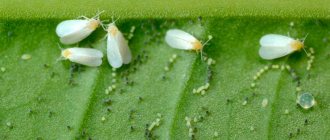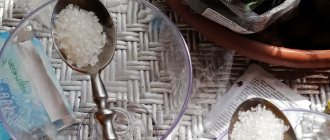Smell is not the most important characteristic of indoor plants. The latter are chosen, first of all, for the attractiveness of leaves, shoots and flowering, for endurance and unpretentiousness, checking whether they are suitable for the conditions in our home. And the fact that many indoor plants can surprise with a pleasant - or not so pleasant - aroma is often forgotten. Subtle, refined, or, conversely, heavy and overwhelming, and sometimes very unpleasant, the aroma of plants can radically change the atmosphere in our home. And the best of the best natural flavors that can fill our homes with sweet clouds deserve special attention and proper selection. After all, they affect our well-being, mood, and even performance.
Common oleander (Nerium oleander). © floradania
Bouvardia longiflora
This Mexican beauty is easy to care for and is one of the most fragrant bouvardias. The plant has a delicate jasmine scent, and in good light it will delight you with abundant flowering from May to December. It has tubular flowers of various colors - from white to deep red.
During the flowering period, bouvardia needs abundant watering and regular irrigation. It is important to avoid stagnation of moisture in the pot to prevent root rot.
Araucaria
An elegant coniferous tree with bright green needles that can be grown in an apartment. Its natural forest smell saturates the air with phytoncides, filters and moisturizes it, which helps improve the microclimate in the house. In December, the plant can be decorated instead of a Christmas tree - its aroma will give you a New Year's mood.
Rarely grows above 2 meters. Needs coolness - the most comfortable temperature in summer is 20 degrees, and in winter about 10.
The delicate scent of the listed plants is a worthy alternative to air fresheners and interior perfumes. Make sure that the concentration of essential oils contained in them does not cause headaches - for this, air circulation must be constant.
Sarcococcus low
Sarcococcus low has a pleasant strong aroma, which it will exude from January to March. The white or pinkish bell-shaped flowers of this plant do not exceed 1 cm in length. After flowering, strong glossy black berries are formed on the sarcococcus.
The flower does not require care and can grow even in a polluted and smoky atmosphere. Loves moist, well-drained soil, but at the same time is drought tolerant. Feels great in the shade and has excellent immunity to diseases and pests.
In winter, the plant should be kept in a cool room with high humidity.
Mixing the scents of indoor crops
Despite the fact that all fragrant indoor plants have their own, distinct individuality, they do not at all require the choice of only one crop. If you are a fan of fragrant plants and value scents as much as the beauty of flowers or leaves, then you can safely create your own collection. True, in the process of selecting fragrant indoor stars, you need to take a completely different approach than when composing conventional compositions.
Treat fragrant plants as part of one big bouquet, arrange scents in such a way that together they create a harmonious, unique atmosphere in the house. Consider the tonic or, conversely, calming effect of the aroma, its intensity and the time when the aroma is revealed to the greatest extent.
Do not mix plants with different scents with each other; arrange them throughout the house so that in every corner you are surrounded by the aroma that suits you best.
Jasmine Sambac
This unusual plant with a sweet, intense scent blooms all year round, taking a break for 2-3 months. Its flowers are used in perfumery and to flavor tea.
Popular varieties:
- Arabian Knights - unpretentious, with a strong sweet aroma and double flowers;
- Grand Duke of Tuscany – capricious, with a rich floral scent and white, dense flowers;
- Maid of Orleans - the flower lives for a day, then falls off, giving way to others;
- Belle of India is unpretentious, blooms all year round with white double flowers.
Jasmine Sambac is light-loving, prefers light, neutral, well-drained soil, and is afraid of drafts and direct sunlight. On the north side and under artificial light it will wither away.
The plant is susceptible to attack by aphids, scale insects and spider mites.
Indoor rose
A rose bush in a pot looks elegant and charming, having a beneficial effect on a person not only with its appearance, but also with the aroma of the flowers. And although roses are less common at home than in open ground, they are becoming increasingly popular thanks to the wide selection of varieties.
Those who grow roses at home note that they smell more fragrant indoors than outdoors.
It is believed that the delicate scent of roses reduces irritability and helps normalize metabolism. Dry air and an abundance of direct sunlight are contraindicated for the plant.
Gardenia jasminoides
Gardenia literally captivates with the jasmine scent of its snow-white double flowers. Its scent is used in their compositions by famous perfume brands: Dior, Chanel, Nina Ricci, Guerlain. In addition, this plant is known for its healing properties and is used in folk medicine. Blooms from July to October.
Popular types:
- Radican Variegata - a dwarf variety, ideal for bonsai;
- August Beauty – blooms profusely with large double flowers;
- Fortuniana – has large camellia-shaped double flowers;
- Four Seasons - blooms all year round.
Gardenia loves high humidity, acidified soil, good lighting and warmth. During the formation of buds and flowering, you cannot rearrange the pot - this can lead to the dropping of buds and flowers. Afraid of drafts.
Lavender
This plant has a cool, subtle and fresh aroma. Lavender is added to bathing water, used as a flavoring agent, and used to make essential oils. It is believed that its smell helps drive away various epidemics and viruses from people.
Currently, the flower is used in the preparation of healing mixtures. Lavender is an excellent relaxant; for a calm atmosphere in the house, plant flowers are sprinkled in the corners. The composition contains valerian, so the plant has a calming effect on the human body.
Pittosporum fragrant
Umbrella inflorescences of white pittosporum stars emit a rich, sweetish odor. Flowering begins in the 4th year after planting and lasts from March to July.
The plant needs sufficient light for the formation of buds and rich foliage color. Afraid of heat and sudden temperature changes. Has good immunity.
Popular varieties:
- Nana - a large number of shoots with glossy dark green leaves;
- Variegate is a spectacular plant with soft green leaves dotted with white spots.
In winter, this flower should be kept indoors without drafts at a temperature of 10-14°C.
Laurel
A beautiful slow-growing shrub that, with proper care, will become a small tree. Its leaves have a piquant herbal aroma that is familiar to everyone.
The plant loves the sunny side and good watering. Once a month the leaves need a shower, after which they exude the most delicate aroma of laurel.
To use fragrant bay when cooking, cut off old shoots with leaves at the root and dry.
Raphiolepis umbellata
White or pinkish fragrant flowers of raphiolepis delight the eye from December to May. Their intense and sweet aroma invigorates and tones.
This rare plant reaches 1.5 m in height and is recommended for growing in bonsai style.
Raphiolepis is unpretentious and hardy, but grows slowly. Loves sunny places with shade and moist, well-drained, slightly acidic soil. Tolerant to short-term soil dryness.
Popular flowers for the garden with a strong aroma
Fragrant annuals and pleasant-smelling perennials can be used for the garden. To get a flower bed that is spectacular and fragrant for a long time, you need to know which of the most unpretentious garden plants form a fragrant flower.
The most fragrant flowers for the garden
Garden fragrant flowering crops can be annual or perennial, which allows you to create attractive compositions:
- Sweet pea is an annual plant with a pleasant, distinct aroma. It is distinguished by a variety of colors, which helps to create front gardens or flowerpots in different styles and colors. Bush-type varieties and hybrids look impressive in flower beds and ridges;
- Alyssum or sea lobularia flowers
- The low-growing Lily of the Valley grows well in the shade. This perennial plant produces small flowers and goes well with peonies and carnations;
- the most common daffodil varieties have a very subtle and very refined aroma, which new varieties and hybrid forms lack;
- spring Hyacinths are especially popular in early flower beds and flower beds. The plant is represented by numerous varieties with all kinds of flower colors, which allows you to choose the best option for decoration;
- Shade-loving violas are best sown before winter, which improves resistance to negative weather factors. This is an ideal solution for decorating difficult-to-cultivate areas and tree trunks of garden plantings;
- Many varieties of Carnation are distinguished by flowers with a persistent aroma that can effectively repel mosquitoes and many plant pests. The most unpretentious species include lush, blue-gray and feathery carnations.
No less popular among gardeners are lilies, roses, chrysanthemums and peonies that bloom profusely with fragrant flowers.
Flowers that smell at night
The fragrant flower in the evening is popular in the design of garden areas and flower beds located in close proximity to the house. Night flowering plants or ornamental crops that smell amazing at night:
- tropical annual Mirabilis is able to bloom profusely throughout the entire summer season, and forms delicious-smelling delicate white, pink, red and yellow inflorescences that open in the evening;
- Evening relatively small flowers of fragrant tobacco are not only attractive, but also very fragrant. The most popular varieties include winged, forest and jasmine;
- the name Mattiola is known to many amateur flower growers. This annual plant opens its flowers to smell in the late afternoon and does not tolerate sunny areas, so it is sown in flower beds and flower beds in the shade of lilac or dahlia;
- the beautifully flowering Levkoy is a relative of Matthiola, but the significant difference is represented by magnificent flowers with many shapes and colors;
- garden mignonette fragrant is especially highly valued by landscape designers for the beautiful shape of the leaves and the pleasant unusual aroma that persists at night;
- Night violet or Hesperis female is the most common decorative type of violet in home gardening, characterized by abundant flowering and a characteristic pronounced aroma.
The annual flower Moonflower is best suited for evening garden decoration, and its delicate aroma intensifies after sunset. The plant is best suited for areas with hot and sunny climates.
Fragrant flowers for the garden (video)
Spicy herbs and fragrant plants
Spicy-aromatic fragrant plants, which have characteristic healing properties, are widely cultivated in most regions of our country. The most popular plants include:
- Peppermint , longleaf, curly, garden and apple mint are perfect for growing in garden plots, and are a valuable ingredient in salads, soups, meat dishes, various drinks and homemade baked goods;
- Melissa officinalis is a popular perennial essential oil herb called lemon balm, which is due to the pleasant lemon smell that the plant retains even when dried;
- Catnip or catnip is not only a useful crop, but also very decorative, thanks to its purple or lilac flowers, as well as grayish-blue leaves;
- Oregano or oregano is a beautiful ornamental plant with a very pleasant aroma, which intensifies on sunny days. The flowers have an attractive pale lilac or pinkish color;
- ordinary, creeping or lemon thyme is known as thyme or Bogorodskaya herb and has a delightful smell as well as a spicy taste;
- Hyssop or blue St. John's wort is a subshrub spicy plant with a tart taste, blooming in attractive spike-shaped blue inflorescences;
- the essential oil and decorative Monarda or garden bergamot is a medicinal and spicy-flavoring plant, and cut bright red, pink, white or purple flowers are perfect for making compositions.
- the medium-sized, spicy-aromatic Lovage has very beautiful pinnately dissected leaves and can become a real decoration not only for garden beds, but also for flower beds;
- perennial spicy fennel has bluish-green split leaves and a characteristic, very pronounced anise smell, due to which it is widely used in soups, vegetable, fish and meat dishes;
- Tarragon is known to many as tarragon. The leaves of this medium-sized plant are widely used in a variety of fish dishes in French cuisine and in the preparation of poultry.
No less popular among domestic gardeners are such spicy and aromatic crops as dill and basil.
Stephanotis profusely flowering
This is the only type of stephanotis that is grown indoors. At the same time, its weak stems need support.
The plant blooms from May to the end of summer, sometimes again in September. Its delicate waxy flowers of cream, white or purple color have a strong, pleasant scent.
Stephonatis does not like drafts and overheating, and it may not bloom in a pot that is too spacious. Prefers rooms with high air humidity and diffused lighting. Loves loose neutral soil. Needs spraying. Picky about water quality.
A pleasant aroma is not always just a bonus
The scent of houseplants is often considered an additional “optional”, perceived more as a prize or a nice addition, rather than as an important characteristic that should be considered when purchasing. Meanwhile, the fragrant nature of flowers and inflorescences, and sometimes leaves of plants, must be taken into account.
Fragrances affect our well-being, emotional state and even health in different ways, and this effect is not limited to “pleasantness”. The perception of odors is purely individual and requires careful selection. In this regard, it is better to treat aromatic indoor crops as when choosing perfume products or choosing oils in aromatherapy. The smell of a particular plant should not only be pleasant to you, but really like it, have a positive effect on your psycho-emotional background and not lead to sleep disturbances.
When choosing fragrant plants, you should also take into account how the smell will manifest itself in individual rooms and closed spaces, whether it will be appropriate in specific rooms and corners of the house, and whether its intensity will become a source of unpleasant emotions and poor health. After all, fragrant indoor plants, even if we are talking about the most exquisite variations, can influence us not only positively.
Selecting plants according to the intensity of the smell in accordance with the purpose of the room is the most important, but not so simple task:
- In the bedroom, only the most delicate, refined, delicate and delicate aromas do not cause anxiety and sleep problems. Plants whose odor intensity increases at night would not be appropriate here.
- Sweet, fruity, cheerful aromas of citrus fruits and other intensely fragrant plants nearby will be appropriate both in a children's and playroom during the day, and in a study or craft corner.
- All aromas that are associated with confectionery, reminiscent of extracts and spices, will be appropriate in the kitchen. As do plants, the smell of which helps purify the air and eliminates unpleasant odors.
- Heavy, thick, rich, hauntingly cloying and intense aromas of “night” plants can only be used in those rooms that you only pass by, where you do not rest or work in the evening. Such plants, even in a corridor or hall, can cause a lot of trouble; most often they will have to be taken away from bedrooms and living rooms at night. But at the same time, if you like their scent, it will be more than appropriate in the bathroom or hallway. And both in the morning and during the day, it will become an additional activating factor in any room, help you forget about drowsiness, put you in a working mood and awaken creative energy just like a cup of invigorating coffee.
- All aromatic plants are conventionally divided into sedative and tonic. The smell of the former calms, relieves fatigue, slows down the pulse, allows you to relax and forget about tension. The latter act on the contrary - they increase heart rate, mental activity, excite the central nervous system, increase endurance and performance. Moreover, tonic aromas are found much more often than soothing aromas. If the first (sedative) are appropriate even in places where you relax and sleep, then the second (tonic) can become a source of great trouble in the bedroom and living room in the evenings. But you shouldn’t overdo it with either one. Check how the plant affects you and consider the nature of its effects when placing it in your home.
Strong-smelling plants are always appropriate for special occasions. A small fragrant bush of a profusely flowering plant, placed on the table as a living bouquet, can transform a festive feast or create a special solemn, romantic atmosphere no worse than the best cut arrangements.
But in any circumstance and with any plant, testing for individual response is still key. The correct selection of plants according to your tastes should be supplemented by checking the smell to ensure its acceptability for all family members. After all, even if the smell is not too pleasant for one person, it is not worth starting a plant with intense aroma.
It is best (and easiest) to check the aroma and its tolerance in those plants that are purchased in bloom. But this option is not always possible. If you can’t make sure that you like the smell of flowers at the time of purchase, before you decide to have a houseplant with a strong smell, be sure to take a closer look at it. Smell the flowers of friends, visit a greenhouse, botanical garden or flower exhibition, walk through flower shops. Before you bring such a plant into your home, you should make sure that its smell will be pleasant to you. It is advisable to carry out this assessment before all other plant purchasing criteria are assessed.
Roses in the interior
Eucharis grandiflora
This tropical beauty is not demanding in care, easily adapts to the microclimate of the room and even with a minimum of care begins to form flower arrows. Blooms 2-3 times a year for 3 weeks.
Eucharis prefers intense, but not bright light and infrequent watering. Loves light, nutritious soil. Will be grateful for regular spraying and wiping of leaves. If there are sharp temperature fluctuations, it may die, and in a container that is too large, it may not bloom.
Murraya paniculata
Exotic Murraya, growing up to 1.5 m in height, has a surprisingly pleasant fresh aroma emanating from its tiny white flowers.
Flowering begins after the fifth year of life and occurs 2 times a year, after which sweet edible terracotta-colored berries with a citrus aroma are formed on the murraya.
Popular varieties:
- Minima - a tree up to 0.6 m high, used to create bonsai;
- Min-a-min – shrub up to 1 m high, with a dense crown;
- Warf Compact is a miniature tree 10-15 cm high and leaves 0.5 cm in diameter.
Hoya fleshy
Hoya fleshy has glossy foliage and beige, waxy, star-shaped flowers with an intense, sweet scent. It blooms in early summer, producing nectar that drips from each petal.
Hoya is unpretentious and tolerates cold and heat well. Loves well-lit places and loose, drained soil. Sensitive to dampness. Afraid of mealybugs.
This flower needs regular feeding with fertilizers for epiphytic plants. You can replant at any time of the year.











